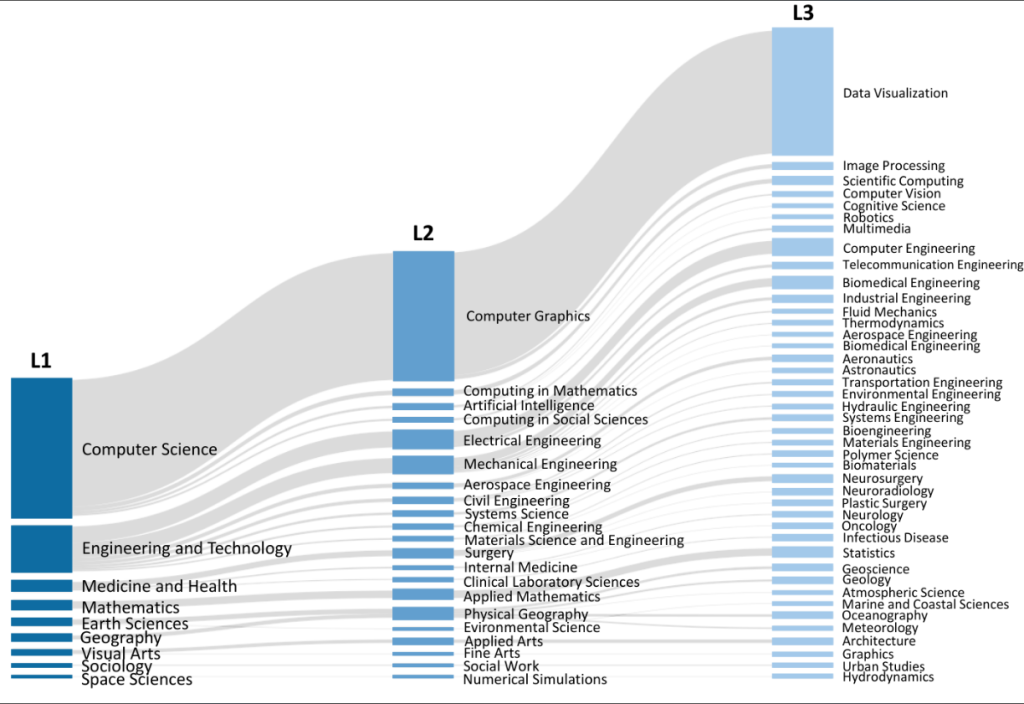Scientometric Analysis

Led by: Ali Sarvghad, Narges Mahyar, Rolando Franqui-Nadal, Rebecca Reznik-Zellen, and Ria Chawla
Related Links: BiblioVis Dataset
BiblioVis Dataset
We performed a scientometric of 30 years of IEEE VIS publications between 1990-2020 in which we investigated the characteristics and trends of gender and collaboration among authors. We analyzed 3,302 publications and collected rich metadata about papers, authors, their affiliations, and institutions, as well as citation counts and references per paper. To derive authors’ genders, we used Gender API, which has been proven in prior research to have high accuracy in exploring gender trends. By using co-authorship as a proxy for collaboration, we investigated the degree and patterns of collaboration between institutions and disciplines. We characterized collaboration as interdisciplinary and inter-institutional and examined the relationship between collaboration trends and gender. Our analysis of the gender distribution shows a notable gap between men (5160, ~84.6\%) and women (899, ~14.7\%) authors. We discovered a steady growth in women authorship from 1990 (avg=3) to 2020 (avg=6). However, based on current trends, gender parity will not be reached sooner than 2062. Our analysis of co-authorship suggests a shift towards increased collaboration, with the average number of authors per paper at 3.7. We also found a steady growth in inter-institutional collaboration, with an average rate of 17.62 percent from 1990-2020, with the majority of inter-institutional collaborations between two institutions. Interdisciplinary collaborations were limited to only a few fields, including Computer Science, Engineering and Technology, and Medicine and Health disciplines. Our study contributes a multifaceted analysis, bringing to light the gender disparity in the current visualization research and providing paths for establishing a foundation for change. We also contribute a bibliometric dataset that complements the existing VisPub dataset by adding authors’ gender and discipline information. We hope our work will call attention to the critical issue of gender inequity within the VIS community and accelerate interdisciplinary to foster a more connected, collaborative, and inclusive community.